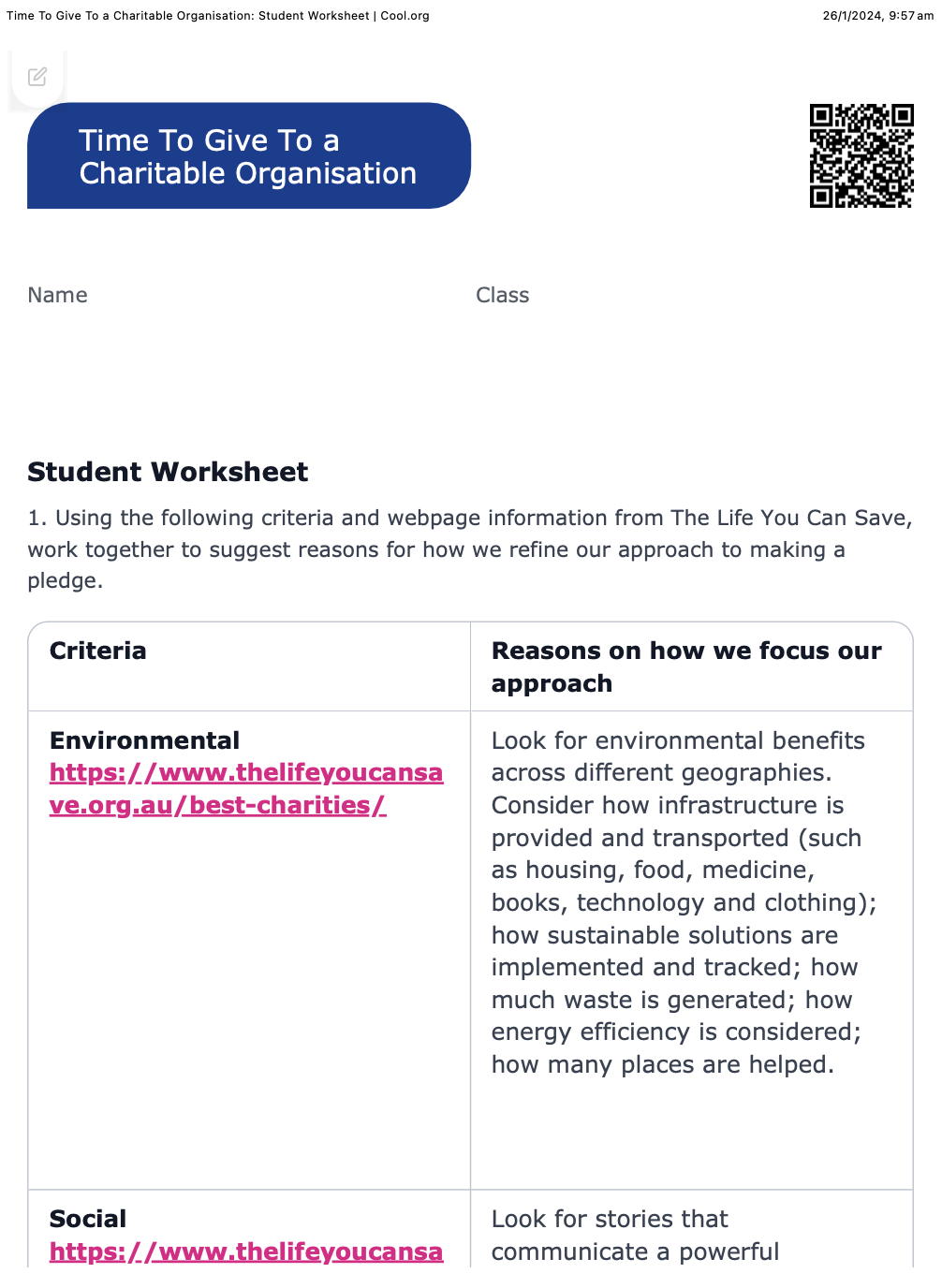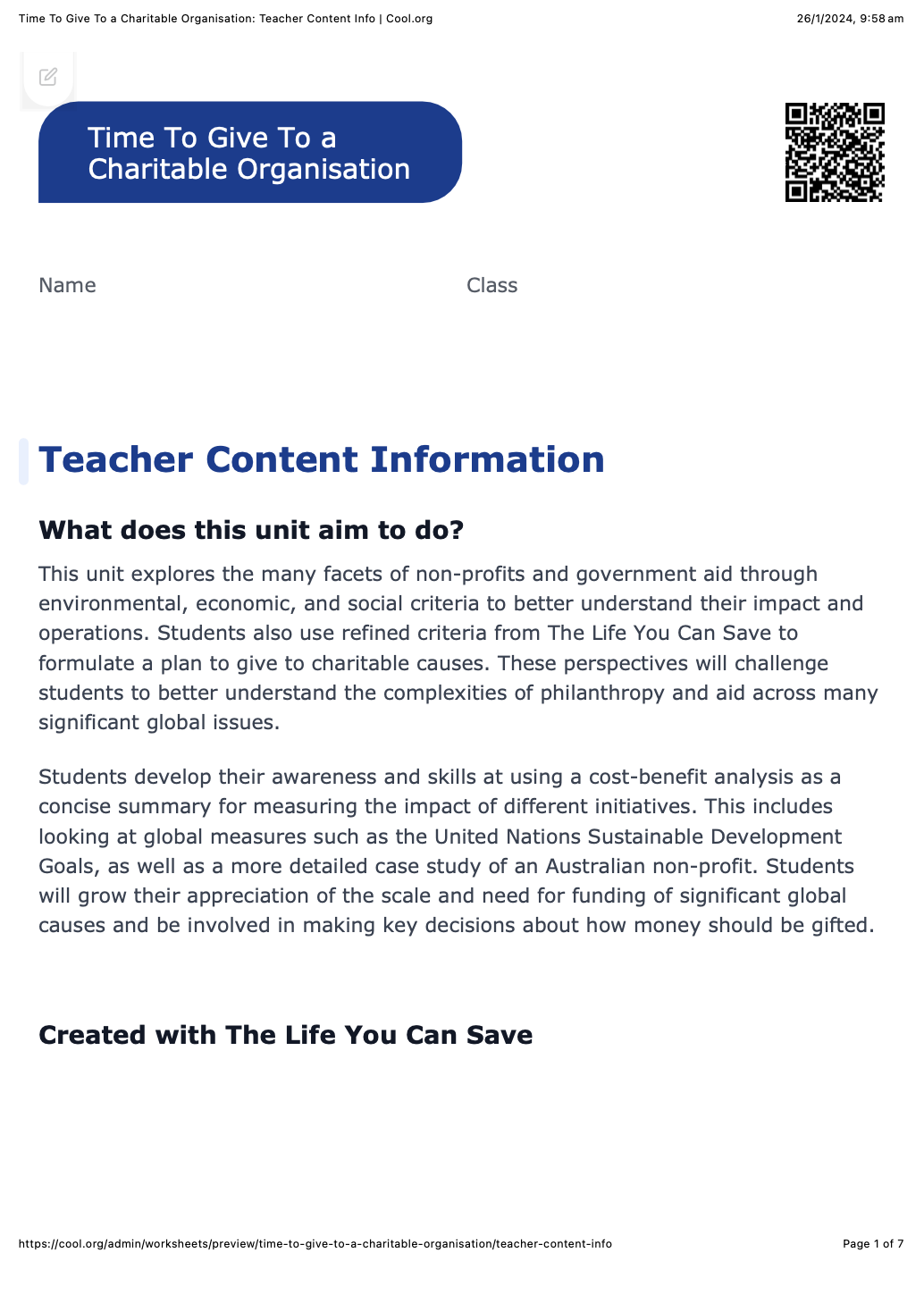Lesson summary
Students will use The Life You Can Save to explore environmental, social, and economic reasons for making a pledge to a charitable organisation and work together to develop a more cohesive pledge plan the class can take action on.
Learning intentions:
Students will...
- evaluate different reasons for supporting a cause and bring some common themes together
- create elements of a plan to make a pledge to a non-profit.
Success criteria:
Students can...
- use criteria, data, and case studies to inform a decision
- collaborate and compromise to serve a classroom plan.
Lesson guides and printables
Curriculum links
Select your curriculum from the options below.
Lesson details
Skills
This lesson is designed to build students’ competencies in the following skills:
- critical thinking
- communication
- collaboration
- ethical understanding
- global citizenship
Curriculum Mapping
Australian Curriculum (v9.0) content description: Years 9 and 10 Economics and Business
- Develop and evaluate strategies using environmental, economic or social criteria; recommend a strategy and explain the predicted impacts (AC9HE9S05 & AC9HE1005)
General capabilities: Digital Literacy
Cross-curriculum priority: Sustainability
NSW Syllabus outcomes: COM5
Relevant parts of Year 9 & 10 achievement standards: Students use economic and business knowledge, concepts and terms to develop descriptions, explanations and reasoned arguments that synthesise research findings.
UN Sustainable Development Goals
UN SDG 10: Reduce inequality within and among countries
- Target 10.b: Encourage official development assistance and financial flows, including foreign direct investment, to States where the need is greatest, in particular, least developed countries, African countries, small island developing States and landlocked developing countries, in accordance with their national plans and programmes.
Resources Required
- Devices capable of accessing the internet
- Sticky notes
- Additional large sheets of paper as needed
Additional Info
This lesson has been developed with the support of The Life You Can Save.
The Life You Can Save conducts research to identify non-profits running highly impactful programs that address the multiple dimensions of poverty. They also help connect people who want to donate money and resources with these non-profits to maximise the impact of their gifts. They aim to create a world where everyone has an opportunity to build a better life and where there’s no suffering or death due to extreme poverty. The Life You Can Save was founded by Melbourne-born Peter Singer, widely recognised as one of the world’s most influential contemporary philosophers, to advance the ideas in his 2009 book The Life You Can Save: Acting Now to End World Poverty (republished 2019). Since then, they’ve worked to introduce the ideas from Professor Singer’s book to new audiences, inspiring people to help others experiencing poverty around the world and empowering them to make the greatest impact possible.
Level of teacher scaffolding: Medium – facilitate class discussion.
Related Professional Learning
Ethical Understanding in the Australian Curriculum v9
Explore how to teach the General Capability of Ethical Understanding as of version 9 of the Australian Curriculum. Learn what Ethical Understanding involves and how to incorporate ethics into your regular teaching.




Welcome back!
Don't have an account yet?
Log in with:
Create your free Cool.org account.
Many of our resources are free, with an option to upgrade to Cool+ for premium content.
Already have an account?
Sign up with:
By signing up you accept Cool.org's Terms and Conditions(Opens in new tab) and Privacy Policy(Opens in new tab).